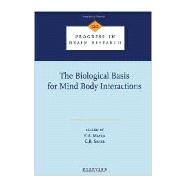
What is included with this book?
|
v | ||||
| Preface | ix | ||||
| Acknowledgements | xi | ||||
| I. Introduction | |||||
|
3 | (8) | |||
|
|||||
|
|||||
| II. Relationship between mind, brain and emotions | |||||
|
11 | (14) | |||
|
|||||
|
|||||
| III. The neurobiology of the stress response | |||||
|
25 | (10) | |||
|
|||||
|
35 | (8) | |||
|
|||||
|
43 | (18) | |||
|
|||||
|
|||||
|
61 | (20) | |||
|
|||||
|
|||||
|
|||||
| IV. Early life experiences and the developing brain | |||||
|
81 | (24) | |||
|
|||||
|
|||||
|
|||||
|
|||||
|
|||||
|
|||||
|
105 | (12) | |||
|
|||||
|
|||||
|
|||||
|
117 | (14) | |||
|
|||||
|
131 | (28) | |||
|
|||||
| V. Influences of the internal environment on the brain | |||||
|
159 | (14) | |||
|
|||||
|
|||||
|
173 | (14) | |||
|
|||||
|
187 | (8) | |||
|
|||||
|
195 | (14) | |||
|
|||||
|
|||||
|
|||||
| VI. Influences of the body on the brain | |||||
|
209 | (14) | |||
|
|||||
|
223 | (14) | |||
|
|||||
|
|||||
|
237 | (8) | |||
|
|||||
|
245 | (10) | |||
|
|||||
|
255 | (18) | |||
|
|||||
|
|||||
|
273 | (18) | |||
|
|||||
|
|||||
|
|||||
|
|||||
| VII. The influence of brain and mind on the body | |||||
|
291 | (18) | |||
|
|||||
|
|||||
|
309 | (8) | |||
|
|||||
|
317 | (16) | |||
|
|||||
|
333 | (18) | |||
|
|||||
|
|||||
|
|||||
|
351 | (18) | |||
|
|||||
|
|||||
|
369 | (12) | |||
|
|||||
|
|||||
|
381 | (12) | |||
|
|||||
| VIII. Practical use of mind-body interactions in medicine | |||||
|
393 | (20) | |||
|
|||||
|
413 | (12) | |||
|
|||||
|
|||||
|
|||||
|
|||||
|
425 | (20) | |||
|
|||||
|
445 | (12) | |||
|
|||||
|
|||||
|
457 | (22) | |||
|
|||||
|
479 | (12) | |||
|
|||||
|
491 | (16) | |||
|
|||||
|
507 | (10) | |||
|
|||||
|
|||||
|
|||||
| Index | 517 |
The New copy of this book will include any supplemental materials advertised. Please check the title of the book to determine if it should include any access cards, study guides, lab manuals, CDs, etc.
The Used, Rental and eBook copies of this book are not guaranteed to include any supplemental materials. Typically, only the book itself is included. This is true even if the title states it includes any access cards, study guides, lab manuals, CDs, etc.